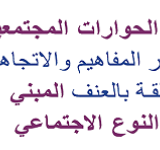STRENGTHENING EYE CARE FOR SCHOOL-AGED CHILDREN IN SCHOOLS AND COMMUNITY SETTINGS IN JORDAN 2023-2026
In Jordan, the Ministry of Health, through the Department of School Health, provides primary healthcare services to schools. The National Strategy for School Health aims to enhance existing services. However, challenges exist, such as the absence of specialized physicians in schools, shortages of medical equipment, financial support, and logistical hurdles.
The analysis reveals a high prevalence of vision difficulties among students, with varying rates across governorates, through the survey, we found that 32.5% of school students in government schools who participated in the survey have vision difficulties, ranging from mild to moderate to severe, this result is higher than the global rate announced by the World Health Organization in 2022, which reported that 27.5% of children are affected by near or far vision impairment. It stated that it was possible to prevent half of this number of vision impairment cases through various intervention strategies.
Economic constraints and limited access to resources hinder obtaining glasses or treatment for children with vision problems. Syrian students exhibit higher rates of vision problems compared to Jordanian students. Parental involvement is crucial in identifying and addressing vision impairments. There is a need for effective monitoring systems beyond the initial school enrollment examination.
Based on these findings, the analysis recommends the development of an effective School Eye Health Screening model, considering the specific needs of the three project sites. It also suggests exploring opportunities for project expansion, including nationwide scaling, care models for younger children, and integration with primary eye care services.


